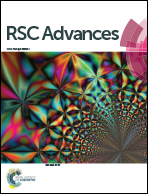Study of breath acetone and its correlations with blood glucose and blood beta-hydroxybutyrate using an animal model with lab-developed type 1 diabetic rats
Abstract
Breath acetone has long been a known biomarker for diabetes. However whether breath acetone analysis can be used for clinical applications ultimately depends on how breath acetone concentration is quantitatively and accurately related to an established clinical diagnostic parameter(s). Numerous studies of breath acetone using human subjects have been done, yet this fundamental question remains unaddressed because complex physiological processes and various conditions of humans are relevant to change of breath acetone. We report for the first time on the study of breath acetone and its correlations with blood glucose (BG) and blood β-hydroxybutyrate (BHB) using an animal model of rats. 18 non-diabetic healthy rats and 20 lab-developed type 1 diabetic (T1D) rats were used as two subject groups. Breath gas samples from the rats were collected using a noninvasive oral intubation method that was compared with the intrusive and time-consuming method of tracheostomy. Breath acetone concentrations were measured using a cavity ringdown spectroscopy based breath analyzer without using additional sample preparation, sample pre-concentration, or calibration. The measured breath acetone concentrations were in the ranges of 1.9–4.3 ppm (part per million by volume) for the 20 T1D rats and 1.4–2.8 ppm for the 18 non-diabetic healthy rats. Simultaneous BG and blood BHB levels were also obtained. Results show that breath acetone, BG, and blood BHB in the T1D rat group all have significant difference from the one in the healthy rat group (P < 0.05). A significant positive relationship (Pearson’s r = 0.644, P < 0.05) between breath acetone and blood BHB was found to exist in both subject groups. A significant negative relationship (Pearson’s r = −0.678, P < 0.05) between breath acetone and BG was found in the T1D rats only. However, the relationship between breath acetone and BG shifts from negative to weakly positive when T1D rats were treated with insulin. Furthermore, results from a multiple linear regression model analysis reveal that breath acetone has a predictive nature for blood BHB in T1D rats, which confirms the sole report in T1D human subjects. This result suggests that the animal model can be used for large scale clinical study to help address fundamentals in human breath analysis in some cases.


 Please wait while we load your content...
Please wait while we load your content...